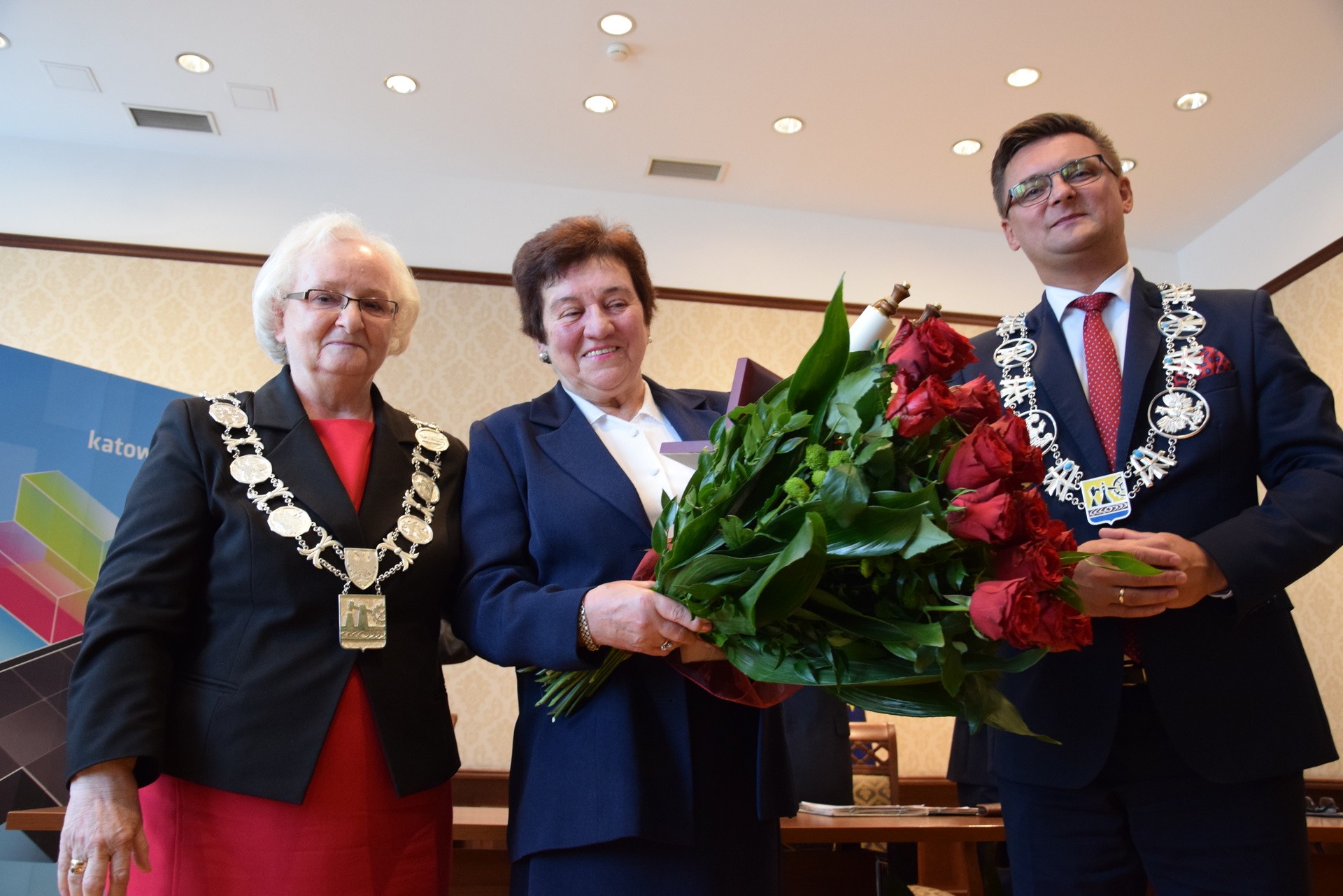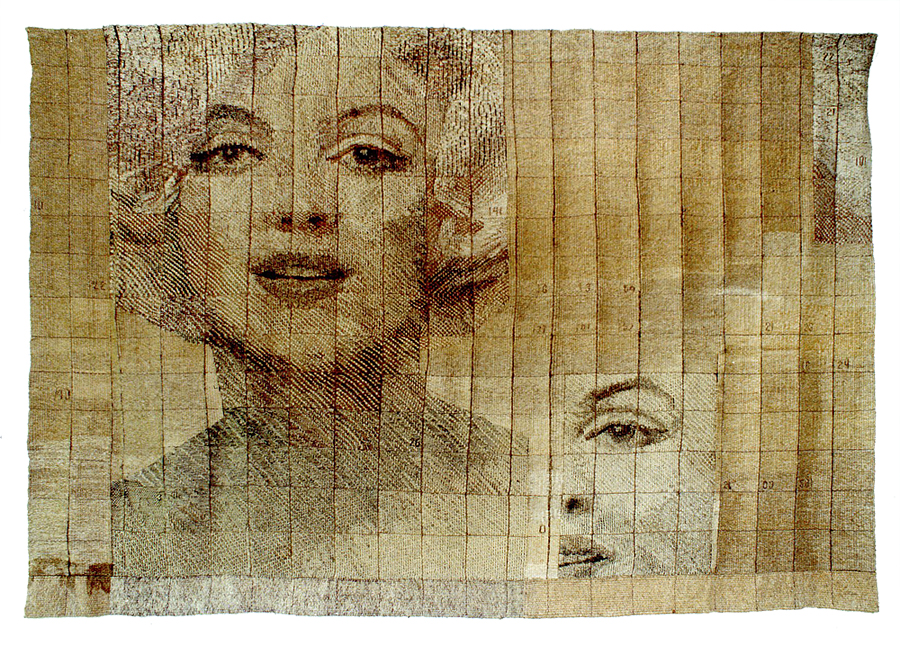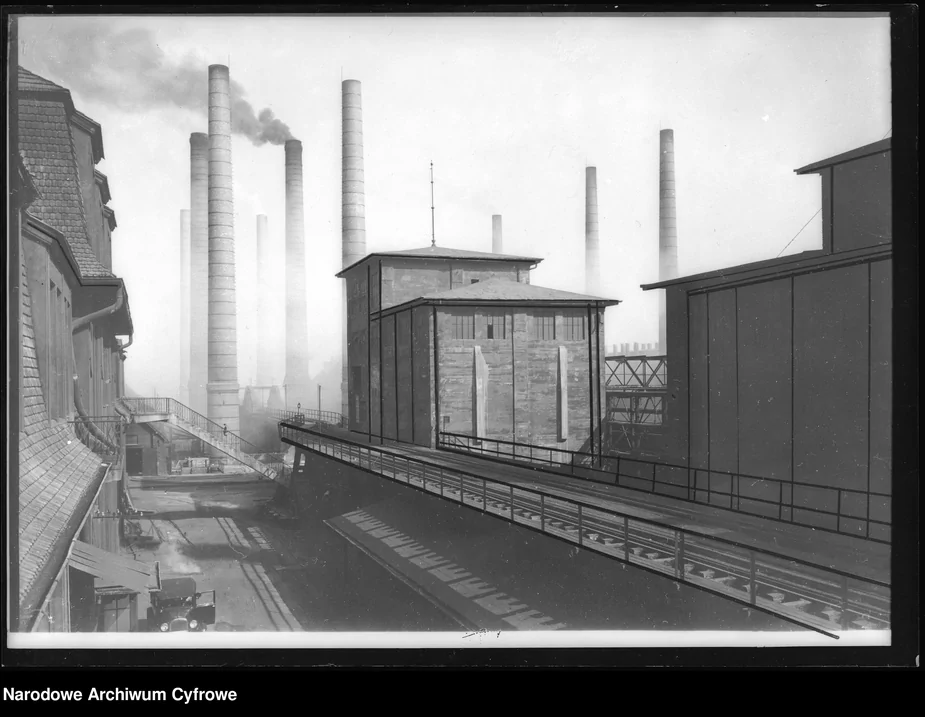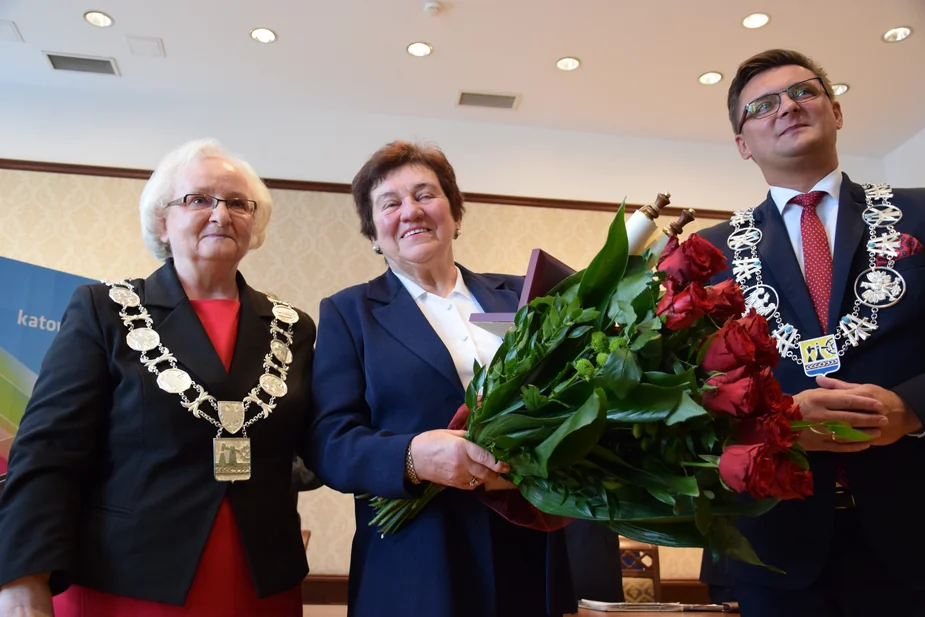|
|
Post by Bonobo on Feb 10, 2019 11:59:06 GMT 1
A series of great Polish women who contributed a lot of good things to this country
A new initiative, “Women on the walls”, showcases Polish women who contributed to significant and lasting change on a local, national or global scale. The heroine of the first mural is pediatrician Dr Jolanta Wadowska-Król.
newsmavens.com/news/women-to-watch/2209/how-a-polish-doctor-helped-thousands-of-children-suffering-from-lead-poisoning
How a Polish doctor helped thousands of children suffering from lead poisoning
Ada Petriczko NewsMavens, Poland
To understand the importance of Dr Wadecka-Król’s work, we need to travel 45 years back in time. In communist Poland circa 1974, few things made the state more proud than its mining and steel industries. The propaganda media outlets were full of stories about sterling steel workers who created the wealth, prosperity and international fame of Communism. Working-class families, especially their offspring -- or should I say “the flower of the nation” -- were the priority of the party leaders.
Back then, to expose that 5,000 children living near a steelworks in Poland’s industrial hub suffer from lead poisoning was synonymous with treason.
And this is exactly what Dr Jolanta Wadecka-Król did.
Her bravery cost her a promising academic career. The discovery of lead poisoning in such a large group of patients could have made international news. But under the communist regime, her doctoral thesis was crushed and locked up in a safe of the regional officials.
Despite this, Dr Król worked incessantly to help her patients.
Thanks to her efforts, the children received appropriate treatment, while the families residing in the closest proximity of the steelworks were given new homes.
Gradually, awareness of lead poisoning grew and the regime could no longer pretend that all is swell.
The mural celebrating this modest pediatrician from a regional hospital opens the campaign “Women on the walls” which will see similar artworks emerge across Poland. Created by “Wysokie Obcasy” magazine, the motto of the series is “Women know what they’re doing”.
Details from the story:
• In 1974, Dr. Jolanta Wadecka-Król (born 1939) was a young pediatrician working in a regional hospital in Szopienice, the industrial suburbs of Katowice, centered around a large steelworks.
• That year, she was approached by a senior doctor from an academic hospital, who discovered that a case of prolonged anemia in one of the boys from the neighbourhood was caused by lead poisoning. She asked Dr. Król to discretely check whether it was a solitary case or if other children in Szopienice were affected.
• Over the following months, Dr. Król examined nearly 5,000 children. The majority of them suffered from lead poisoning, the symptoms of which include: anemia, diarrhea, vomiting, and hyperextensive joints. 13% of the children were mentally challenged.
• In the official documentation, Dr. Król could not mention the words “lead poisoning”. Neither were the results of her extensive research published. However, she and others involved in the case managed to persuade the authorities to help the children and their families, albeit quietly,
• The much deserved recognition of Dr. Król’s work came years later. She received an honorary citizenship of Katowice city, among many awards.
• The mural was designed by artist Andrzej Wieteszka. Next in line are the murals celebrating legendary alpineer Wanda Rutkiewicz (in Wrocław) and the music icon Kora (in Warsaw).
  |
|
|
|
Post by pjotr on Feb 13, 2019 0:47:41 GMT 1
Bo, I learned from life that Polish women can be strong, independent human beings with great organisational and survival (Second World War) skills. I had a very strong Polish grandmother (Babcia) without whom probably the family wouldn't have survived the war. My Polish aunts were impressive women. My Polish-American aunt was a fascinating working women who raised my Polish American cousins (2) well. My Polish mother ( a Dutch citizen today) is a strong woman too, who organised the Dutch family well and also worked in her younger years in Poland and the Netherlands. When I think of Polish women I ofcourse think about Marie Skłodowska Curie, Wisława Szymborska and the Polish female prime ministers Hanna Suchocka, Ewa Kopacz and Beata Szydło, but also about Polish artists like Urszula Plewka-Schmidt (known for her monumental wall compositions and as the co-founder of the of the " Polish school of tapestry"), and the Polish sculptor and fiber artist Magdalena Abakanowicz (20 June 1930 – 20 April 2017).  Magdalena Abakanowicz standing between her sculptures Magdalena Abakanowicz standing between her sculptures Magdalena Abakanowicz Magdalena Abakanowicz Urszula Plewka-Schmidt, “Canons of Beauty: Madonna from Krużlowa,” 1979 Urszula Plewka-Schmidt, “Canons of Beauty: Madonna from Krużlowa,” 1979 Urszula Plewka-Schmidt, “Circle,” 1975, 7th Lausanne Biennial Urszula Plewka-Schmidt, “Circle,” 1975, 7th Lausanne Biennial Urszula Plewka-Schmidt Urszula Plewka-SchmidtCheers, Pieter |
|
|
|
Post by Bonobo on Jan 19, 2022 10:31:53 GMT 1
A new initiative, “Women on the walls”, showcases Polish women who contributed to significant and lasting change on a local, national or global scale. The heroine of the first mural is pediatrician Dr Jolanta Wadowska-Król.
newsmavens.com/news/women-to-watch/2209/how-a-polish-doctor-helped-thousands-of-children-suffering-from-lead-poisoning
How a Polish doctor helped thousands of children suffering from lead poisoning
Ada Petriczko NewsMavens, Poland
To understand the importance of Dr Wadecka-Król’s work, we need to travel 45 years back in time. In communist Poland circa 1974, few things made the state more proud than its mining and steel industries. The propaganda media outlets were full of stories about sterling steel workers who created the wealth, prosperity and international fame of Communism. Working-class families, especially their offspring -- or should I say “the flower of the nation” -- were the priority of the party leaders.
Back then, to expose that 5,000 children living near a steelworks in Poland’s industrial hub suffer from lead poisoning was synonymous with treason. Here is a more detailed story of the doctor and her fight www.onet.pl/styl-zycia/onetkobieta/jolanta-wadowska-krol-walczyla-z-olowica-wsrod-dzieci-komunisci-ja-ukarali/p502kdk,2b83378a
The "lead children" began to disappear. The communists wanted to hide the "problem"
1970s. At the beginning of the school year, it turned out that two classes suddenly had to be combined into one. The communist authorities did not see the problem for a long time and simply "buried it under the carpet". Meanwhile, more and more often sick children could be noticed in Szopienice, who "disappeared" after some time. The mystery was solved by a local doctor - Dr. Jolanta Wadowska-Król. She saved thousands of lives, but she paid a heavy price herself.
Luiza Nowak
6.4K
December 31, 2021, 16:12
You can read this text in 5 minutes
A fragment of the cover of the book "Lead children. Forgotten epidemic" by Michał JędrykaA fragment of the cover of the book "Lead children. Forgotten epidemic" by Michał Jędryka - Press materials
In the 1970s, in Szopienice in Upper Silesia, symptoms of lead disease were observed in children. The authorities of the Polish People's Republic, however, did everything to reveal the truth. After all, a disease caused by industry and environmental pollution would offend the majesty of the supposed "power of communist authorities"
At the same time, Dr. Jolanta Wadowska-Król fought tirelessly for the lives of the children from Szopienice. As a pediatrician, she knew the local community very well. She managed to examine approx. 5 thousand. children. Most of them were sent to sanatoriums. After their return, she appointed 621 families from family houses at Huta Metali Nieżelaznych "Szopienice" to move to a new housing estate
The activity of Dr. Jolanta Wadowska-Król did not go unnoticed. The doctor had respect among the local community. However, the communist authorities decided to "punish" her. Her scientific career was blocked
"It was worth (...), if not for all this hard work, today many people would probably be sick (...) I was disappointed that at the university at that time I was shown that I didn't really mean anything there. I packed it into a sack and took it to the attic "- said Małgorzata Król in the film" Mother of God of Szopienice "
More such stories can be found on the main page of Onet.pl
When we know a lot about the effects of the reactor explosion at the Chernobyl nuclear power plant or the ones dropped on Hiroshima and Nagasaki, the lead epidemic in Szopienice in Upper Silesia was shrouded in silence . The case began to come to light only thanks to a student of one of Katowice's high schools, Małgorzata Król, who in 2013 made a short documentary about her grandmother as part of the project "We are looking for heroes" .
Until now, Dr. Jolanta Wadowska-Król has been well known and appreciated by the local community. Today, however, as an honored citizen of Katowice , winner of the Wojciech Korfanty , as well as the honorary badge "For Merit for the Protection of Human Rights" awarded by the Commissioner for Human Rights , honorary doctor of the University of Silesia , and even ... the heroine immortalized in the mural , is also respected outside Upper Silesia. However, she herself remembers her activities modestly:
I performed the normal work of the district doctor. Only I did it well
So how did it happen that Dr. Jolanta Wadowska-Król was exposed to the communist authorities? And how did she discover a silent epidemic "taking" more children? Today we will remind her story.
"Kanarek survived in Szopienice only one day. Only rats were not defeated by the lead"
Years later, Dr. Jolanta Wadowska-Król recalled that it all started with 6-year-old Karol, who came to her with his mother for an examination in 1974. The boy was in poor health. The doctor immediately saw his black teeth and the characteristic way of walking resembling "stork chasing". Detailed research was necessary.
He came back to me with recurrent anemia. I sent him for research to prof. Bożena Hager-Małecka (the then provincial consultant for paediatrics - editor's note) to the clinic in Zabrze. It turned out to be a lead
Until now, this disease has been associated with adult factory workers. However, in the vicinity of Huta Metali Nieżelaznych "Szopienice", symptoms of lead disease began to be noticed among children. Pain in the joints, lead colic, as well as visual disturbances and damage to the nervous system were almost everyday life there. Besides, there was a special school nearby. At that time, however, health problems were not associated with nearby factories.
"It was gray, dull, there was no greenery. Even dogs and cats died as a result of lead. And the canary survived only one day in Szopienice. Only rats were not defeated by lead" - described this area by Dr. Wadowska-Król.
Why was lead poisoning on such a large scale in this area? Let us remember that those were times when ecology was not as common as it is today. The main workplace in the area was Huty Metali Nieżelaznych "Szopienice". Its employees and their families lived in the nearby family houses. Factories there were almost a natural landscape. The first lead smelter in Szopienice was opened in 1864.
Apparently, the chimneys of the steel plant were producing a yellowish one with a characteristic smell reminiscent of rotten eggs. Later it turned out that the alleged filters did not fulfill their function - they were dummy. Ecology and security in communist Poland? In the Polish People's Republic, the allegedly "eighth economy in the world" such a thing did not exist. In fact, the inhabitants of family houses struggled with access to basic hygiene products on a daily basis.
They didn't wash their hands, then they ate a bread roll and soaked up a lot of lead. They just ate the lead. Hygiene? In the familok, there was one tap on the ground floor for water intake, about which hygiene we are talking about: one child washed his hands, the other came and washed in the same dirty water
In addition, housewives, wanting to take care of the health of the family, grew vegetables in the surrounding allotments. They didn't realize that lead was also being absorbed into the soil. In Szopienice, misfortune was in the air.
It's not like it's always been, the name is missing. In a moment he will tear it out again - another name. We look at the journal in the absence of teachers. Krystian and Liliana are drawn with a horizontal line made with a ruler. Across the log. Adjustment. There was a man, there is no man
- wrote Michał Jędryka in the book "Lead children. Forgotten pandemic".
The children of Szopienice were disappearing, which was simply impossible to miss.
However, Dr. Jolanta Wadowska-Król did not leave her patients to their fate. She decided to act.
"I thought: they would not take my doctor's diploma away from me, and that they would put me somewhere? Then a lot of people were sitting"
Prof. Bożena Hager-Małecka recommended that Dr. Wadowska-Król also examine other children, living similarly to Karol and his family, near the ominous-looking chimneys. First, 20 children were examined, and then the area was expanded to include another Szopienice street. In total, the health of 5,000 was checked. small patients within three months.
Lead was stored in the bones, in all tissues, in case of a disease, it was activated and passed into the blood. When I realized the scale of the problem, we immediately decided that the children should be taken as far away from the steel plant as possible
However, the logs for the feet were thrown from the very beginning. It was impossible to speak out about the lead, because it would "offend" the power of the People's Republic of Poland and thus the power of the Polish United Workers' Party, headed by Edward Gierek. It wasn't even possible to use the word lead on the patient's record. Doctors used a fixed "code" and the children were then referred for an observation that ended in "positive" or "negative".
There were even problems with delivering notices about the research. Local post office workers had a grudge against the fact that there were too many letters from the clinic. Therefore, Dr. Jolanta Wadowska-Król, together with nurse Wiesława Wilczek, provided a significant part of the notifications about the tests themselves.
The research was therefore carried out almost in the conspiracy. The sick were sent to a clinic in Zabrze, and the remaining children to sanatoriums in Rabka and Istebna, to "detoxify" their organisms from lead.
The families of the young patients of Dr. Jolanta Wadowska-Król were grateful to her, and at the same time said in private conversations that they were afraid of losing their jobs. The situation was deadlocked. The factory sued for the maintenance of the family. At the same time, however, it was a health hazard not only for the youngest.
I had nothing to lose. I thought: they will not take my doctor's diploma, and that they will put me somewhere? Then a lot of people were sitting
— Admitted Dr. Jolanta Wadowska-Król years later .
"I asked my parents not to spread the word about this research. The authorities could close the possibility of further research. Later, at the Institute of National Remembrance, I found out that the matter in the party authorities was high-profile. That me and the laboratory workers could be imprisoned. (...) The then party authorities did not allowed people to accept something like occupational diseases, especially in children. But I would not stop this research anyway. People already found out, it was unstoppable. Officially, there was no mention of lead, but everyone knew "- she said at the meeting "Akademia Opowieści" organized by "Gazeta Wyborcza".
Dr. Jolanta Wadowska-Król was inconvenient for the communist authorities. She was known unofficially as "Our Lady of Szopienice". Anyway, she was punished. For striving for truth and doing your job well.
It was impossible to speak out about the lead. There was only a mention in "Trybuna Robotnicza":
In several regions of the Katowice Province, incl. preventive medical examinations of groups of children and adolescents are carried out in Szopienice, Katowice-Ligota, Siemianowice and Cieszyn. They are of a control nature, the purpose is to compare the health status of children living in an industrialized area and children from the so-called green areas
The action of Dr. Jolanta Wadowska-Król, however, brought results . "Upstairs", a decision was made to move the families from the family houses closest to the steelworks to a new housing estate at ul. Fish. The pediatrician appointed 621 families in total. Houses at ul. Rzemieślnicza, Antoni Makarenko and Obroncow Westerplatte are demolished. Official reason? The documents say: "The buildings are in a zone that poses a direct threat to the life and health of residents due to air pollution by gases and dusts of Huta Metali Nieżelaznych Szopienice".
In addition, Dr. Wadowska-Król managed to "force" the activists of the smelter to regularly provide workers with the then scarce milk (a total of 10,000 bottles a day). Calcium was important in the treatment of lead because lead was less likely to "accumulate" in the bones.
ADVERTISEMENT
The ending of this story is one bittersweet. It is true that Dr. Wadowska-Król managed to save a lot of people, but many of her patients died at a young age or their health deteriorated significantly after many years. However, it cannot be denied that her actions stopped the spreading of the silent lead epidemic. Ultimately, the publicity of the matter contributed to the closure of some of the plants and "filling up" the contaminated areas. At the end of the 1980s, there was only a division for the extraction of lead from batteries.
And how was the career of Jolanta Wadowska-Król? Her lead research formed the basis of her doctoral dissertation. The Medical University of Silesia, however, never made it possible to defend it. The main opponent of the research was, above all, the university rector, Jan Jonek. An anonymous reviewer issued a negative review of the work.
Jolanta Wadowska-Król surrendered. She went back to work in the clinic. "These palace arrangements are not for me," she admitted. "It was worth it. I know that if it weren't for those sleepless nights and miles that I went from door to door, pleas and persuasions ... if it wasn't for all this hard work, many people would probably be sick today" - she said.
I was disappointed that at the then university I was shown that I didn't really mean anything there. I packed my doctorate and research results into a sack and took them to the attic. Instead of taking sedatives, I started embroidering
—Said Dr. Jolanta Wadowska-Król in the documentary "Matka Boska Szopienicka", the author of which is her granddaughter - Małgorzata Król. It was thanks to this short production that Poles from outside Upper Silesia got to know the history of the tireless pediatrician from Szopienice.   |
|















